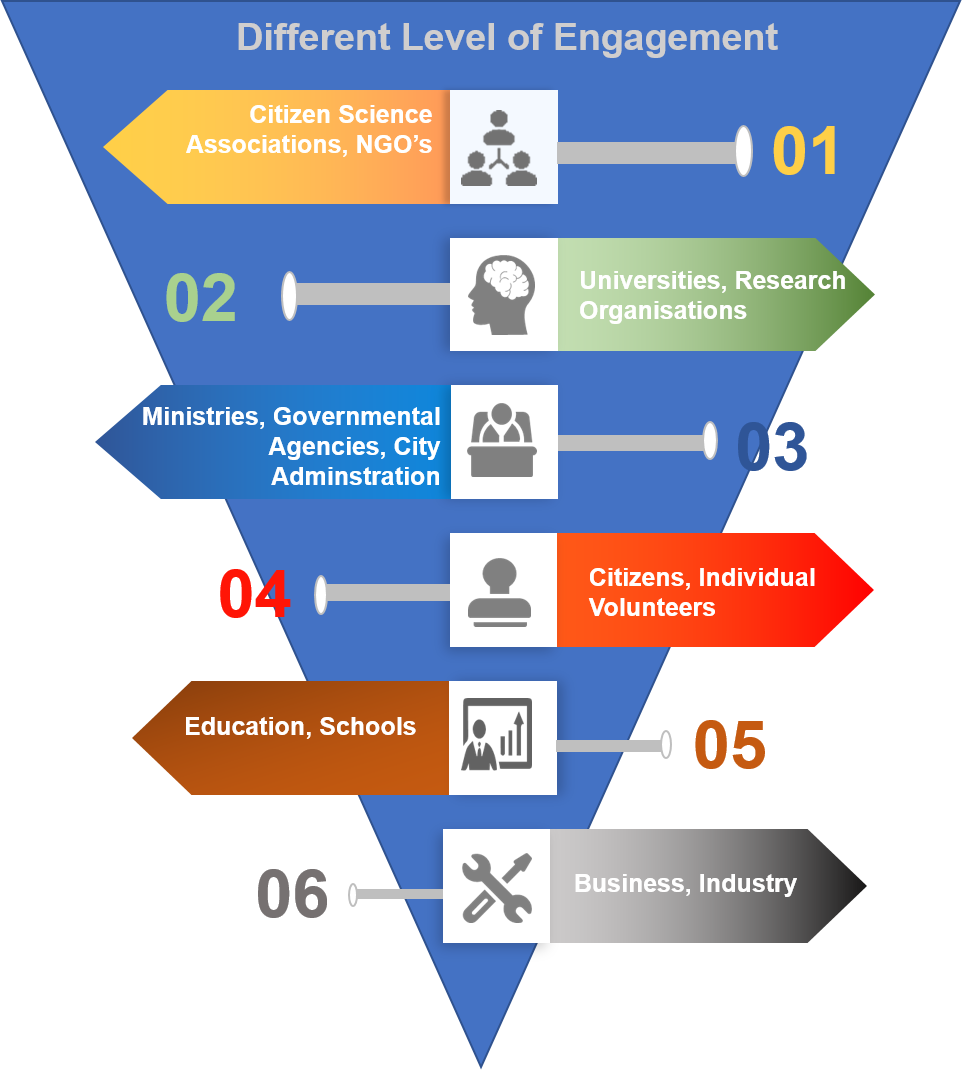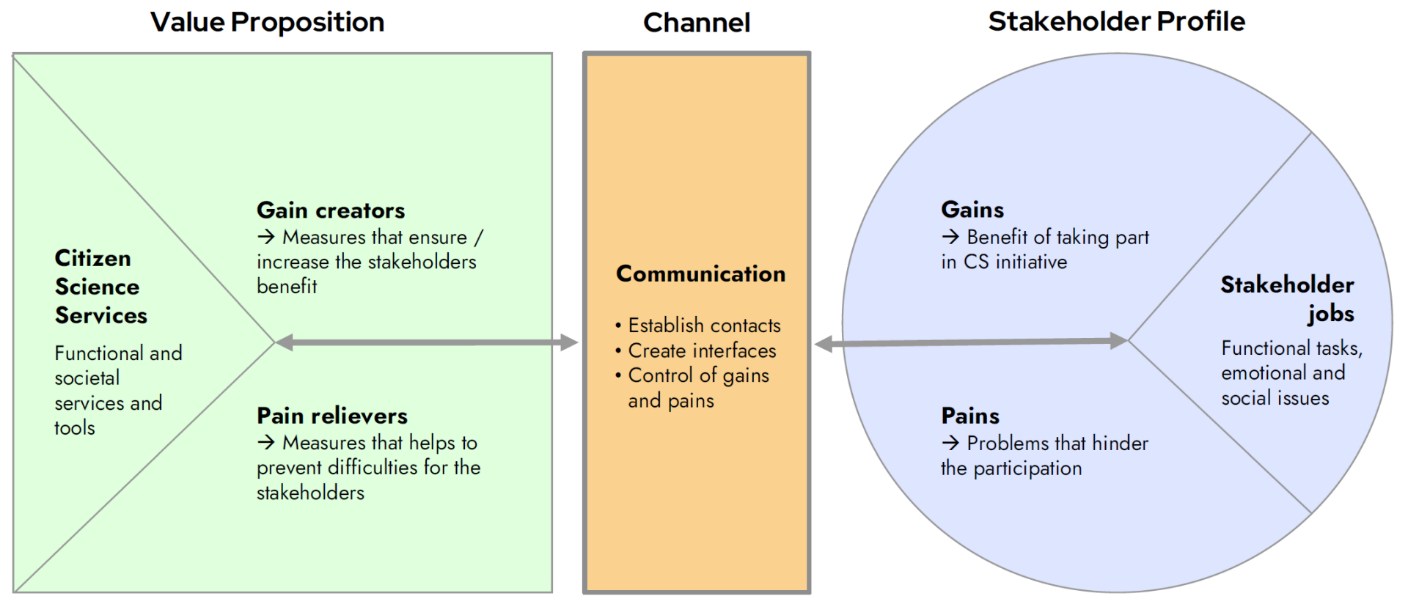Step 3: Selection of suitable participants
People engage in citizen science activities for a variety of reasons, including personal interest in a sub-ject, financial incentives to collect data, a desire to increase their knowledge of a project (e.g. under-standing how sensors work or a broader issue), a sense of community, or a genuine desire to make a positive contribution. Recognition of and responsiveness to these different motivations will be critical to attracting a broad range of participants.
In the context of CS, adopting a marketing approach involves a more thorough examination of potential participants and their motivations for participating in CS projects. This examination of the participants implies an intensive analysis of the variability of stakeholders within the research process, including the development of tailored and effective communication strategies (Hart et al., 2022). Understanding the factors that motivate participants is crucial, but equally important is identifying obstacles that may dis-courage volunteers or customers from getting involved (Stukas et al., 2016).
Based on an international stakeholder analysis conducted by Göbel et al. (2017), six main stakeholder groups are involved in CS initiatives with a varying degree of engagement and contributions.

Following marketing tools can be applied.
Stakeholder analysis is an important tool in stakeholder management. It involves the systematic identification of stakeholders, the assessment of the interests, needs and concerns of the stakeholders involved, and their relevance and influence on a project (Eden et al., 2013). It is crucial for subsequent stakeholder engagement in the implementation of actions to influence their habits. Following figure shows the main steps in the stakeholder analysis process and the overarching questions that need to be answered.

The value proposition canvas (VPC) is a strategic tool that helps businesses to understand their customers' needs and design products or services that effectively meet those needs. The VPC reflects the added value or benefit that a product or service provides to the market or customer (Osterwalder et al., 2014). This value should be as high as possible to eliminate a customer's problem or create an ad-vantage for them.
Generally, the VPC consists of two components: the customer profile and the value map, which together identify the key features and benefits of a successful product or service. The left-hand side of the VPC is dedicated to the product or service itself. This section identifies potential Pain Relievers, which help reduce customer barriers, and Gain Creators, which are factors that improve the overall customer experience. Gain creators can be expected or even positively surprise customers. The right-hand side, the customer profile, presents the individual tasks (customer jobs) the customer/user has to accomplish in his daily life and outlines the gains (benefits) and gains (obstacles).
The VPC-based marketing approach can be innovatively adapted to CS projects by considering the indi-vidual stakeholders with their individual needs and concerns regarding different issues. Therefore, it is crucial to assess each stakeholder specifically, taking into account their gains and pains, to determine their suitability for a project. The use of the VPC allows for a more in-depth stakeholder analysis, especially the identification of approaches and tools to motivate more citizens to get involved. To achieve this, there are three essential aspects, the customer profile and value map as parts of a marketing VPC and the communication channel as a new important aspect. All these aspects must be incorporated into a CS-specific consideration, including the recognition that CS is focused on providing valuable services or tools rather than selling a product, which differentiates it from traditional business theory.

